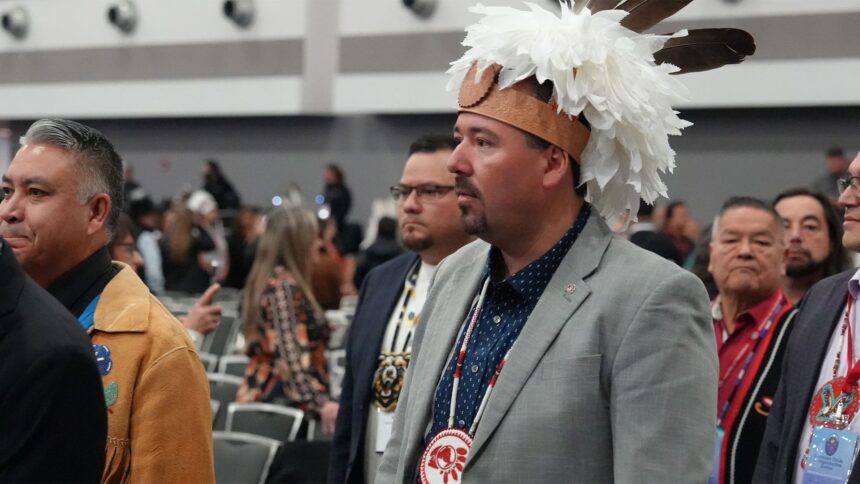First Nations people in Ontario are still dying from opioids at much higher rates than the rest of the province, according to a new report from the Chiefs of Ontario (COO) and the Ontario Drug Policy Research Network. Between 2019 and 2022 – the most recent years with full records from the coroner – the opioid death rate for First Nations nearly tripled. In those two years, 389 First Nations people in Ontario died from opioid overdoses. By 2022, First Nations were dying at a rate nine times higher than non–First Nations—12.8 deaths for every 10,000 people compared to 1.4 for non–First Nations “These statistics shed a light onto one of the most pressing issues of our time. Far too many people—both First Nations and non-First Nations—are tragically losing their lives to opioids,” said Abram Benedict, chief of the COO. “The opioid and toxic drug supply crisis has devastated many communities across this region. Nearly everyone has been affected by this in some way.” Who is most affected? The report shows that First Nation adults between the ages of 25 and 44 are the hardest hit. More than one in ten were in treatment for opioid use disorder in 2023 and this same age group also had the highest death rates in 2022. Gender matters too. Among First Nations, men are about twice as likely as women to die from opioids. But women are more likely than men to be prescribed opioids for pain. For example, in 2023 about 14 per cent of First Nations women living outside their communities were prescribed opioids for pain, compared to 11 per cent of men. Where people live is another factor. First Nations who live outside their communities are at much greater risk than those living within. Hospital visits for opioid poisoning were more than twice as common among First Nations living off-reserve compared to those living on-reserve. Deaths followed the same pattern, with people outside their communities dying more often than those inside. “We need more resources, not fewer, to protect our people, safeguard our future, and provide the support essential for healing,” Benedict said. “As harm reduction sites and services are being closed across Ontario, we are witnessing the erosion of crucial lifelines and support services for our people and Nations. “It is undeniable that deaths and harms are escalating at an alarming rate and our people are bearing the brunt of this crisis.” Prescriptions down, treatment and harm reduction up Health rules in Ontario and across Canada now warn against using opioids for long-term pain because of the high risk of addiction and overdose. Since about 2017, doctors have been cutting back on opioid prescriptions. While this meant that doctors were generally less likely to prescribe opioids for pain across the board, First Nations were still prescribed at a higher rate. In 2023, about 12 per cent of First Nations people were prescribed opioids for pain, compared to 8 per cent of non–First Nations. At the same time, First Nations are far more likely to be in treatment for opioid use disorder. About one in 20 First Nations people received opioid agonist therapy (OAT) in 2023, compared to about one in 250 non–First Nations. Newer harm reduction approaches are also growing. Safer supply—regulated medications like hydromorphone that replace the dangerous street supply—has been on the rise since 2018. But in 2023, only six First Nations communities had safer supply such programs running. The report points to land-based and community-led healing programs as part of the solution, but notes these are often underfunded. Researchers used the federal Indian Registry System to identify registered First Nations people in Ontario. They then linked that information with Ontario health records to track prescriptions, hospital visits, and confirmed overdose deaths. To tell whether someone lived inside or outside their First Nation community, the study used the address recorded during hospital or clinic visits, or, if no visit happened that year, the address listed in the registry. A crisis far from over Nearly 51,000 people across Canada have died of opioid overdoses since 2016, according to Health Canada. At last month’s Assembly of First Nations meeting in Winnipeg, chiefs warned that the opioid crisis is outpacing the supports available. Chief Mark Arcand of the Saskatoon Tribal Council said his Nation has opened treatment centres, safe homes and cultural healing programs, but the need is growing faster than services. Chief Patsy Corbiere of Aundeck Omni Kaning in Ontario, pointed to underfunding and gaps in policing, saying her community is trying new measures but still faces dealers, overdoses and too little government support. For First Nations in Ontario, researchers and leaders say the way forward must include trauma-informed care, harm reduction, and First Nations-led solutions. “Deaths and harms are escalating at an alarming rate and our people are bearing the brunt of this crisis,” said Benedict. Continue Reading
Opioid deaths among First Nations in Ontario remain higher than rest of population, new report finds

Leave a Comment











